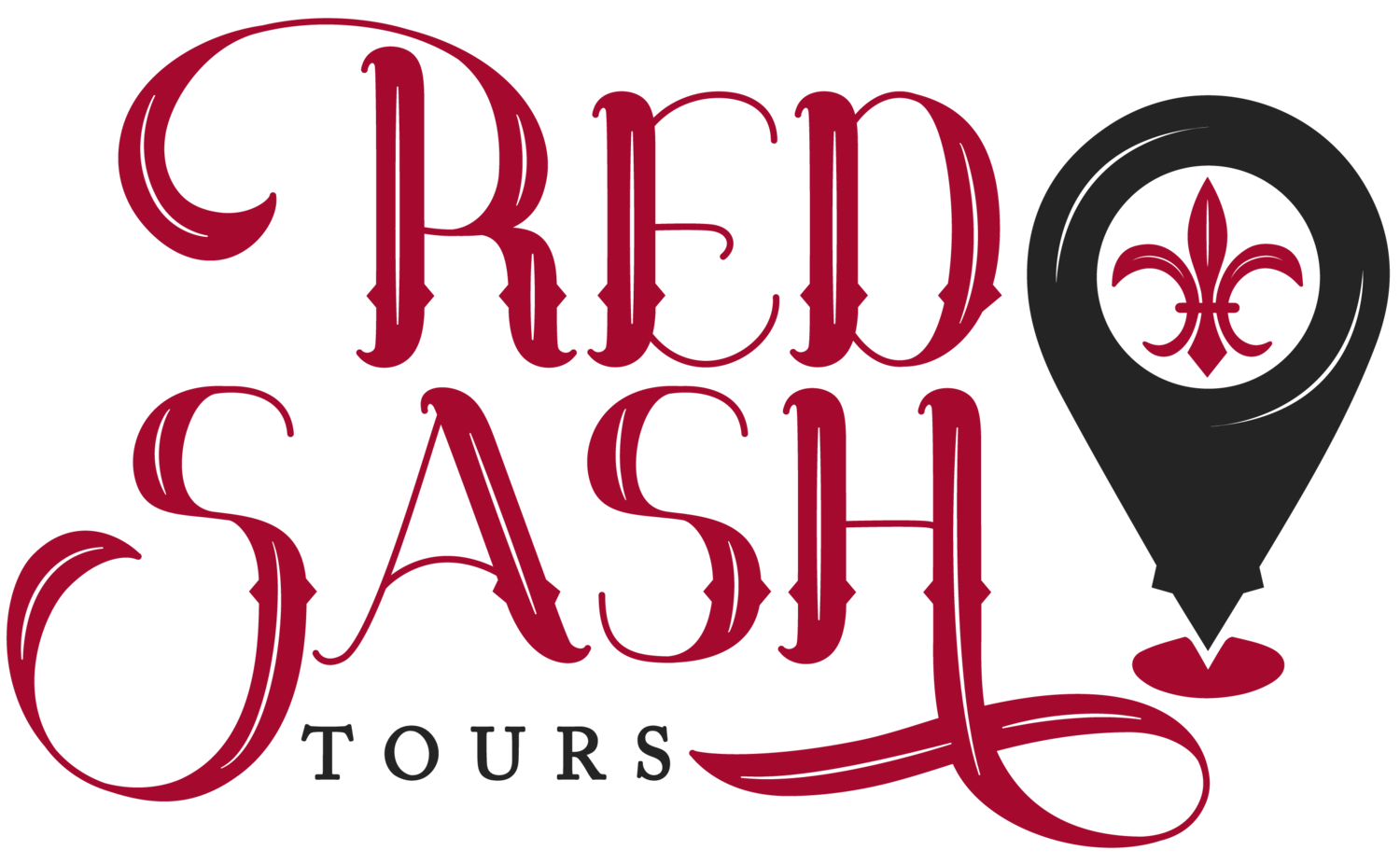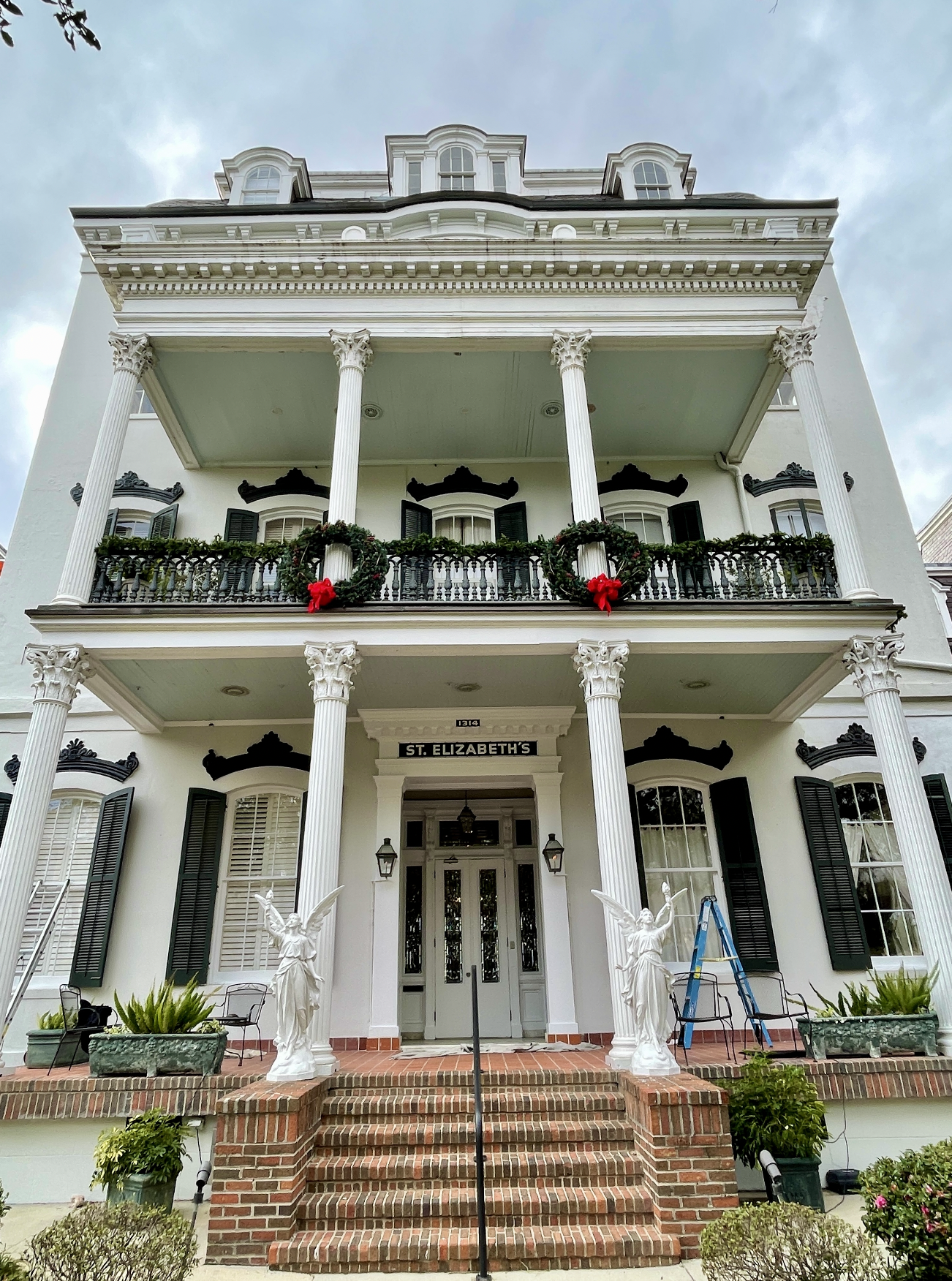Anne Rice’s Top Ten New Orleans Experiences
Novelist Anne Rice’s life left an indelible mark in New Orleans. Her death has left a void, but fans don’t just have her literature to remember her by. There are various landmarks around New Orleans that anyone can visit to experience Anne Rice’s New Orleans.
1239 First Street: This home, a Greek Revival with Italianate elements, was purchased by Anne Rice in 1989 and she and her husband Stan lived in it until 2004. It was also the setting for her novel, The Witching Hour
Anne Rice’s former home in New Orleans on 1239 First Street
.
1314 Napoleon Ave (St. Elizabeth’s Orphanage): This 1860s Italianate has quite a history. It was an orphanage, chapel, and Catholic school for girls before Rice bought it in 1993. It is probably the home most associated with the writer. Rice remodeled the 55,000 square foot building, adding, among other things, a giant ballroom, a writing studio (for her), and a painting studio (for Stan). The vampire Lestat gave the house a shout out in Memnoch the Devil. Personal fact, I went to one of Rice’s “garage sales” – I forget the year – and ended up buying one of her zebra-styled silk blouses. She was selling about six of them, all identical. Rice sold the orphanage in 2003, shortly after her husband died, and the home is now upscale condos.
St. Elizabeth’s Orphanage. Anne Rice’s former home in New Orleans on 1314 Napoleon Ave.
3711 St. Charles Ave: This 1880s Victorian mansion in the Garden District is one of Rice’s “earlier” mansions, which she bought in the 90s when she was allegedly writing Lasher. Much smaller than St. Elizabeth’s, the center hall home is 8,747 square feet and has the original gorgeous stained-glass windows.
Anne Rice’s former home on 3711 St. Charles Ave.
The Rice Family Tomb: Located in Metairie Cemetery (5100 Pontchartrain Blvd), the Rice mausoleum holds her husband Stan and young daughter Michele. Stan, who passed in December of 2002, has three of his poems engraved on plaques on the left side of the tomb. The bronze doors have roses on them, and the interior has a beautiful stained-glass window with a basket of flowers and the words “May Perpetual Light Shine Upon Them O Lord.”
The Rice Family Mausoleum in Metairie Cemetery
Lafayette Cemetery (1400 Washington Ave): Established in 1883, the cemetery is home to the fictional tomb of the Mayfair witches. The cast-iron Karstendiek tomb is known as “Lestat’s tomb” because Rice was inspired by its intricate design. Save Our Cemeteries restored this gorgeous tomb a few years ago. Rice also staged a jazz funeral at the cemetery to introduce her book Memnoch the Devil. Rice laid in a glass coffin and was driven to the Garden District Book Shop for her signing. Rice once recounted in an interview that she was able to hear the mournful jazz music from her coffin and feel every jostle and bump along the way, and it was a “wonderful experience.”
Lafayette Cemetery
Garden District Book Shop (2727 Prytania Street, #114 in the Rink): The Garden District Book Shop is the bookstore where Anne Rice held many of her book signings. They carry a large number of regional titles and signed first-edition books by local and national writers. Coincidentally, when I stopped by to take a photograph, members of the Anne Rice fan club were meeting outside.
The Garden District Book Shop located at the Rink
Gallier House (1132 Royal Street): This 19th-century home built by James Gallier Jr. in 1861 is now a museum and is the inspiration for the home of the vampires Lestat, Louis, and Claudia. In a 2014 Facebook post Rice wrote,“I've toured the Gallier House many a time thinking, ah, this is where Louis and Lestat and Claudia live in my heart…”
The Gallier House at 1132 Royal Street
Madame John’s Legacy (632 Dumaine Street): This 18th-century building in the French Quarter is one of the best examples of French colonial architecture. The house’s name was inspired by George Washington Cable’s 1874 short story “Tite Poulette,” in which the character Monsieur John gives a Dumaine Street house to his mistress Madame John. In the movie Interview with the Vampire, this is the house Brad Pitt’s character says in a voiceover that Lestat and Claudia finished off whole families, as the scene shows caskets being carried out of the house.
Madame John’s Legacy at 632 Dumaine Street in the French Quarter currently (under construction)
Hotel Monteleone (214 Royal Street): This French Quarter hotel was Aaron Lightner’s house in The Witching Hour. The Hotel Monteleone is also home to its famous Carousel Bar, the only revolving bar in the city.
The Carousel Bar at the Hotel Monteleone
Straya/Copeland’s Cheesecake Bistro/ St. Charles Coach House (2001 St. Charles Ave): Formerly a Mercedes dealership, in the last line of the book Memnoch the Devil, Lestat sees his reflection in the abandoned building’s window and says ''Let me pass now from fiction into legend."' Al Copeland (founder of Popeyes Chicken) purchased the building and turned it into the restaurant Straya, a peach-colored, neon-lit building with metal palm trees and golden panthers, which some critics described as art deco in drag. Right before Mardi Gras that year, Rice took out a full-page ad apologizing to visitors and locals for the “monstrosity” and saying that it in no way represented our city. Copeland fired back with a two-page ad touting the restaurant’s “classic” design and saying he was going to add a little more garlic to the menu, keep a crucifix under his pillow, and carry a wooden cross. He added “P.S. see you in court.” Copeland filed a defamation suit against Rice when he learned that she was planning on opening a restaurant nearby called Café Lestat. In response, Lestat himself responded (through Anne Rice), writing ''Mr. Copeland, nothing short of your indescribable restaurant could shock me out of my torpor and my coma. I am now myself again. It is nothing short of a stroke of genius on your part to create a restaurant that will be immortalized in history, legend and literature.'' The suits were thrown out (the big winner was the Times-Picayune who made $$$ in advertising fees) and Copeland ran a “Find Lestat" promotion at his restaurant and urged his employees to dress up like vampires. Ironically, Copeland’s and Rice’s tombs are located approximately a couple blocks away from each other on the same street. The Fried Chicken King and Gothic Queen, neighbors in eternity!
Straya/Copeland’s Cheesecake Bistro/St. Charles Coach House on 2001 St. Charles Ave.
Sadly, Anne Rice, like Lestat, has passed into legend. R.I.P. Ms. Rice!
If you would like to read more about Anne Rice and Al Copeland’s feud you can purchase my book Hope & New Orleans: A History of Crescent City Street Names. If you would like to learn more about Anne Rice’s tomb and others in Metairie Cemetery, you can Book Here.











